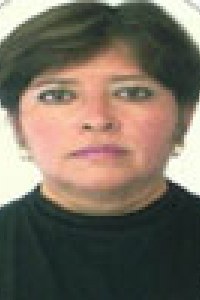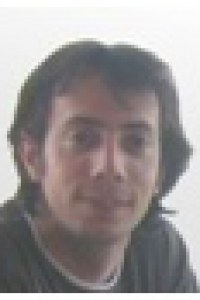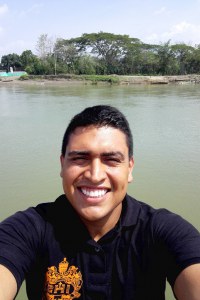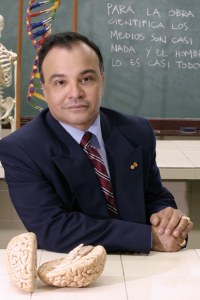Carneiro, P. M. S.
Departamento de Produção e Sistemas Escola de Engenharia, Universidade do Minho Azurém, 4800-058 Guimarães, Portugal
351 253 510345, pcarneiro@dps.uminho.pt
Paz Barroso, M.F.C.
Departamento de Produção e Sistemas Escola de Engenharia, Universidade do Minho Azurém, 4800-058 Guimarães, Portugal
351 253 510353, mbarroso@dps.uminho.pt
Braga, A.C.S.
Departamento de Produção e Sistemas Escola de Engenharia, Universidade do Minho Azurém, 4800-058 Guimarães, Portugal
351 253345, acb@dps.uminho.pt
ABSTRACT
This project consisted on the identification and analysis of the major contributing factors towards the risk of musculoskeletal disorders on dentists.
The first stage of this research consisted on the distribution of a questionnaire to a total of 4200 dentists across the country. Response rate was 17%.
The activity of dentists was characterized into major task-types and each one was characterised in detail and video recorded. Suitable risk assessment techniques were applied for quantification of the risk of musculoskeletal disorders. Initial results suggest that most activities performed by dentists have a moderate to high risk of musculoskeletal disorders.
Keywords
Musculoskeletal disorders, dentistry, risk assessment.
INTRODUCTION
Last decades have been prolific in changes regarding both technology and the way in which production processes are run and organized. Among the negative consequences associated with the changes introduced are the increase registered both on the number of complaints of stress and the incidence of musculoskeletal disorders (MSD). According to Tozzi these have in fact become the most important work-related disease [1].
A considerable number of activities are usually associated with the need of repetitive movements and effort of the upper limbs which constitute a potential risk of musculoskeletal disorders, particularly under certain work conditions.
Nowadays evidence exists suggesting that the number of workers affected by musculoskeletal disorders is in the order of millions across the world. The incidence of
this category of disorder became significant and should be regarded as one of the most important occupational health problem in Europe. Recent estimates indicate that a quarter, or even a third, of the European workforce is exposed to physiological, organizational or psycho sociological risk factors which increase susceptibility to musculoskeletal disorders [2].
Given the relevance and significance of this matter in terms of occupational health, the European Trade Union Confederation (ETUC) and the European Trade Union Technical Bureau for Health and Safety (TUTB) put forward, in 1997, a campaign for action and increase awareness regarding the MSD [3][4]. Several trade union organisations were involved and a significant number of activities were implemented across different members of the European Union. Similar goals have underlined the implementation of the 4th European Week for Occupational Health and Safety held by the European Agency for Work Safety and Health. This initiative was also devoted to the prevention of work-related musculoskeletal disorders.
The importance of musculoskeletal disorders acquires particular relevance within the areas of medicine and other health care activities. This is also truth for dentists, whose activities are associated with a considerable number of risk factors. In fact, repetitiveness of movements, prolonged muscular effort and the postures adopted, often maintained for long periods, are some of the main factors contributing to increasing the risk of MSD at the upper limbs.
In order to identify the main MSD risk factors associated with the activities of dentists, Finsen has developed and distributed a questionnaire to a sample of Danish dentists [5]. Results suggest that 65% of the respondents have reported problems and complaints associated with neck and shoulders region while 59% of the inquiries have presented complaints at the lumbar region.
Additional evidence on the pertinence of the analysis of the risk of MSD on dentists came from the investigation undertaken by Burke and colleagues in the United Kingdom [6]. Results obtained indicate that musculoskeletal pathologies have been linked to circa 29% of health-related advanced retirements among dentists.
The importance of the incidence of MSD among dentists (as well as the associated social and economical consequences) on the one hand, and the fact that this subject has hardly ever been analysed in Portugal on the other, have prompted the research project undertaken. Accordingly, main goals of research have been defined as the characterization of the dentists activity as far as the risk of MSD is concerned, and the identification and definition of solutions which may contribute to reduce overall risk levels.
BRIEF DESCRITPTION OF THE DENTIST ACTIVITY
Main Activities Performed
Seven main types of activities were identified. These are essentially related to the technical and functional characteristics associated with each one.
- Restoring Treatment – This consists on the elimination or removal of tooth decay and the subsequent restoration of the original shape of the tooth.
- Endodontics – needed when inflammation of the tooth pulp occurs. The dentist’s intervention focuses on the removal of the sore pulp of the tooth, followed by the restoration of the tooth cavity.
- Tartar removal – as the name suggests this consists on the scaling and polishing of the tooth surface in order to remove stains and tartar.
- Oral Surgery – this activity may vary from a simple tooth extraction to the implantation of a new tooth or realignment of the jaw.
- Implantation – this constitutes an activity which provides tooth replacement by an implant. It consists on the placement of a metal device which will allow support for the artificial tooth.
- Prosthesis – this consists on the implant of dental prosthesis on the basis of a mould produced by the dentists.
- Orthodontics – this activity requires that the dentist aligns the positions of the patient’s teeth, not only for aesthetics reasons, but also to facilitate chewing and preservation of the teeth.
Some Ergonomic Issues Associated with the Dentists Activity
Some decades ago it was frequent to find dentists working on a standing posture, using old and cumbersome equipment and tools and the layout of their consulting rooms showing little regard for Ergonomics considerations. This scenario has changed significantly and nowadays most dentists work sitting on comfortable and adjustable chairs which enable them to adopt more adequate postures while performing patients’ treatments. In addition, also the patients’ chair is adjustable enabling reclining, hence a more adequate position relative to that of the dentist.
The application of ergonomic principles to the design of dentists’ consulting rooms as well as to the design of tools and equipment has revolutionised significantly the practice of dentistry. As suggested by Guay, dentists’ consulting rooms are today safe, comfortable and healthy workplaces [7].
Notwithstanding the developments occurred as far as the equipment and furniture design are concerned, evidence from different research carried out shows that risks still prevail with regard to the practice of dentistry.
Generically dentists activities may be characterised by the repetitive nature of many of the movements performed, often associated with incorrect and inadequate postures and to force exertion. As previously mentioned, these constitute some of the most important risk factors as far as the incidence of musculoskeletal disorders is concerned, particularly, such is the case, when the movements performed are associated with flexion, extension and/or rotation of upper limb joints. To make the scenario worse in terms of risk, it is frequent to observe that a considerable number of dentists work throughout the day with no, or only with insufficient, rest breaks.
While treating patient, dentists perform a series of activities at the oral cavity, where a considerable number of restrictions are imposed in terms of movements. The latter gives rise to the need for adoption of awkward and inadequate postures – trunk bending, head bending forward, raised shoulders, among other. Particularly important, as far as the need of awkward postures and the strain imposed on muscles and joints are concerned, are the treatments performed at the second upper molar tooth or those required on the internal surface of the incisor teeth [8].
Evidence exists which suggests that dentists constitute a professional group which is exposed to greater stress than other professionals [9]. Underlying this fact are the uncomfortable postures adopted, for example during oral surgery, the simultaneous need for fine and accurate handling of equipment, and the mental concentration requirements. In addition, the anxiety shown by many of the patients may contribute to increase dentists stress.
Dentists perform the most of their activity with the head leaning forwards, with some rotation of the neck, and with the arms, particularly the right arm, abducted [9]. This combination of postures imposes considerable load on the muscular-skeletal structure of the neck, namely on the trapezoid muscle.
A research project carried out with the aim of relating the different postures adopted by dentists with complaints of pain or discomfort on the musculoskeletal system has shown that those dentists who make a more often use of indirect vision of
patients’ mouth (with the assistance of a mirror) present less complaints than those who don’t [10].
Other research on this area has shown that dentists experience great static muscular strain on the neck and the chest area while performing tartar removal on patients [11]. The risks associated with the performance of this activity might be increased further if one considers that tartar removal requires rapid and repetitive movements of the fingers and wrist associated with the force exertion in order to effectively remove tartar from the patients’ teeth.
METHODOLOGY
Two main types of data collection methods have been applied throughout this research project.
A questionnaire was developed in order to collect information which would enable a detailed characterisation of the dentists’ population on one hand and of some of the main risk factors of MSD on the other. This questionnaire was distributed by mail to circa 4200 dentists. This stage was carried out with the collaboration of the Dentists Professional Association in Portugal.
In order to objectively characterise the risk associated with the main activities performed by dentists these were grouped into seven main categories. Each category of activity was filmed in order to be subsequently analysed in detail with regard to the postures required and the associated risk of MSD.
The Rapid Upper Limb Assessment (RULA) technique was selected for this purpose [12]. This is based on the identification of the major factors which are known to contribute to the incidence of MSD at the upper limbs. Among the risk factors included are the number of movements performed, whether there is the need for static muscular work, the strength applied, the posture adopted, whether there is the need for accurate and rapid movements, the frequency and length of rest breaks, age and physical fitness of the operators, anthropometric dimensions as well as some environmental factors such as lighting, thermal environment, noise and vibrations.
RULA is applicable both to industry and tertiary sector workplaces – generally to all those situations for which the nature of the activities performed is associated with the risk of MSD at the upper limbs.
In order to assess the risk of complaints and of MSD the RULA starts with the identification and characterization of the different postures adopted while performing each task. In addition it is necessary to determine the amount of strength applied (if applicable) and the frequency of movements. Computation of the overall RULA score is done considering the combined effect of the different risk factors defined, through input of the different partial scores on a worksheet. Partial scores are obtained for classification of Group A (upper limbs and wrist) and Group B (neck, trunk and legs). The higher the overall score obtained (on a scale varying from 1 to 7) the higher the risk level which may be assigned to the task or activity.
The statistical analysis of the data collected was performed using software SPSS, version 12.
RESULTS OBTAINED
Results from the Questionnaire
Response rate to the questionnaire was approximately 17% (a total of circa 700 valid questionnaires).
Statistical analysis of the data collected is still under way but initial results already allow the characterisation of some important issues, namely: the characterization of some personal data regarding the dentists’ population; the characterisation of generic issues regarding the conditions under which the activity is performed, and the characterisation of the main complaints reported by dentists.
Characterisation of Personal Data
The variables included on this section were: age, gender, weight and height. The variables age, weight and height are all distributed according to the Normal
Distribution (Q-Q Plot test) and have all shown a statistically significant differenceaccording to gender (t-test, pvalue
Papers relacionados














